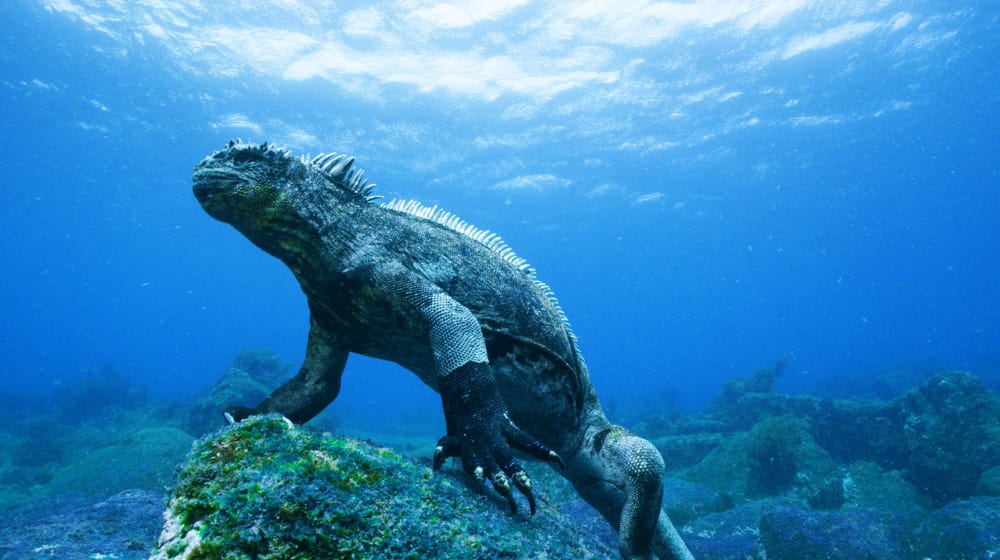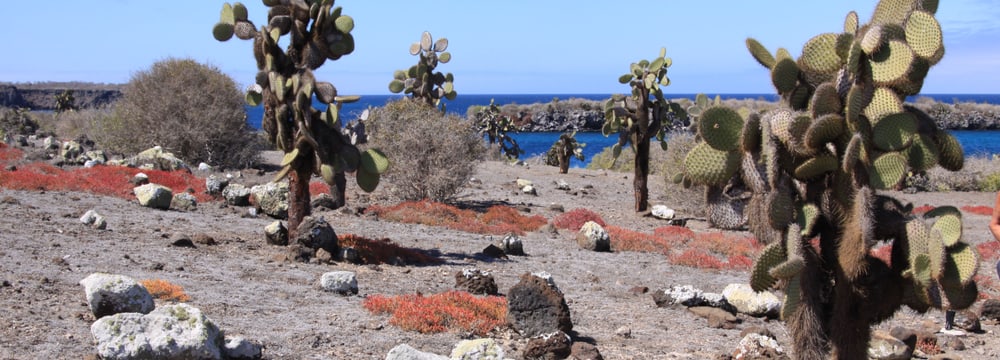
Why are cacti so important to the Galapagos?
Anyone who has visited the Galapagos is familiar with the cacti of all kinds that give the arid landscape its unique image. These plants have managed to conquer the islands despite the volcanic rocks and arid soils, adapting over time to this inhospitable environment and giving rise to a large number of endemic species, i.e. those found only in the Galapagos.
The large Fig Cactus or Opuntia Cactus (Opuntia galapageia), with their flat, often leaf-like segments (platycladias) and yellow to orange-red flowers, have remained in the memories of many visitors. They owe their German name (tree opuntia) to the tree-like appearance of the cacti, and differ from island to island as they have adapted to local conditions.
The opuntias are an important part of the ecosystems, providing shelter and food for other endemic creatures and serving as a source of water for, for example, cactus finches, mockingbirds, Galapagos pigeons, giant tortoises and land iguanas. In return, iguanas and tortoises in particular disperse plant seeds via their droppings.
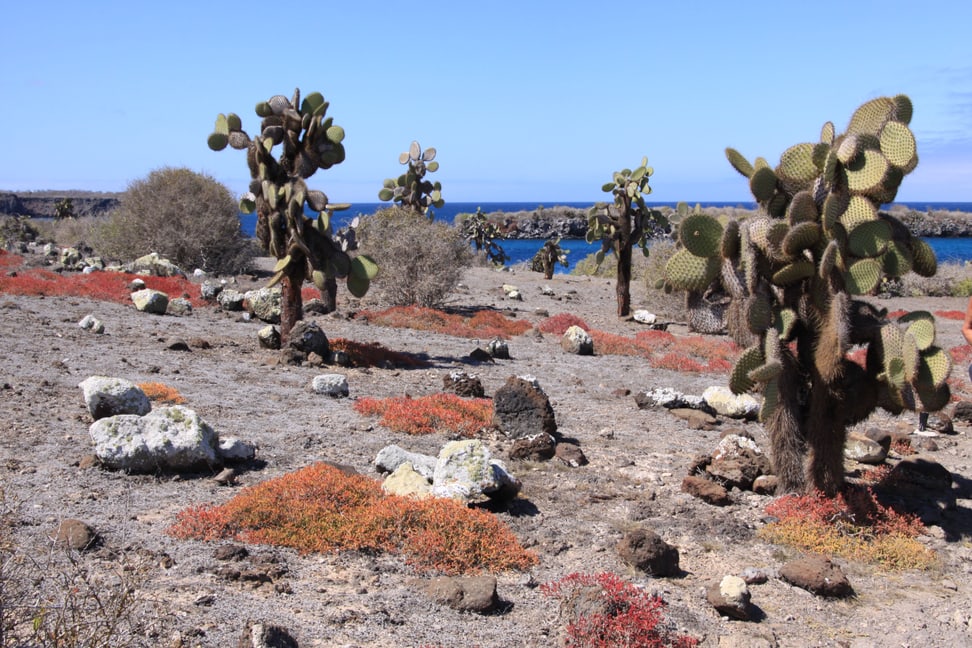
Opuntia cactus ã Doris Hölling
Small Lava Cacti (Brachycereus nesioticus) are found on the youngest islands of the Galapagos, where they survive in volcanic landscapes without organic soil and despite periods of drought. They were among the first plant species to colonize a lava flow, helping other plant species to establish themselves.
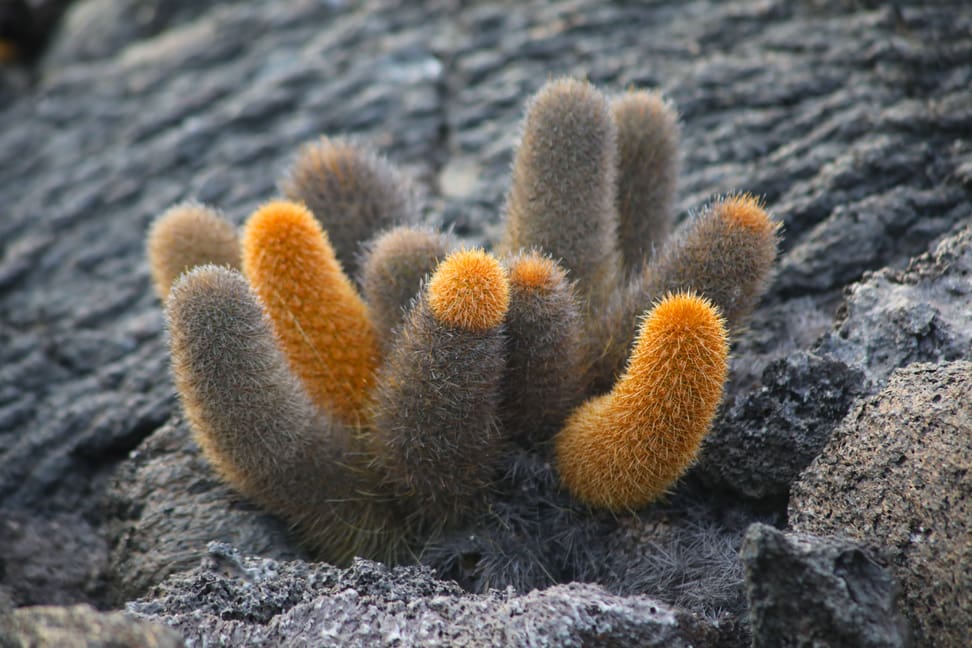
Lava Cactus ã Doris Hölling
Another characteristic cactus species endemic to the archipelago is the Galapagos Candelabra Cactus (Jasminocereus thouarsii). This cactus, which can grow up to 7 m high, has white flowers that turn into oval, reddish fruits up to 10 cm long. It also stores water in its fleshy shoots, enabling it to survive in dry, rocky environments. It is also vital for birds such as Darwin's finches and the Galapagos pigeon, which find food and shelter here.
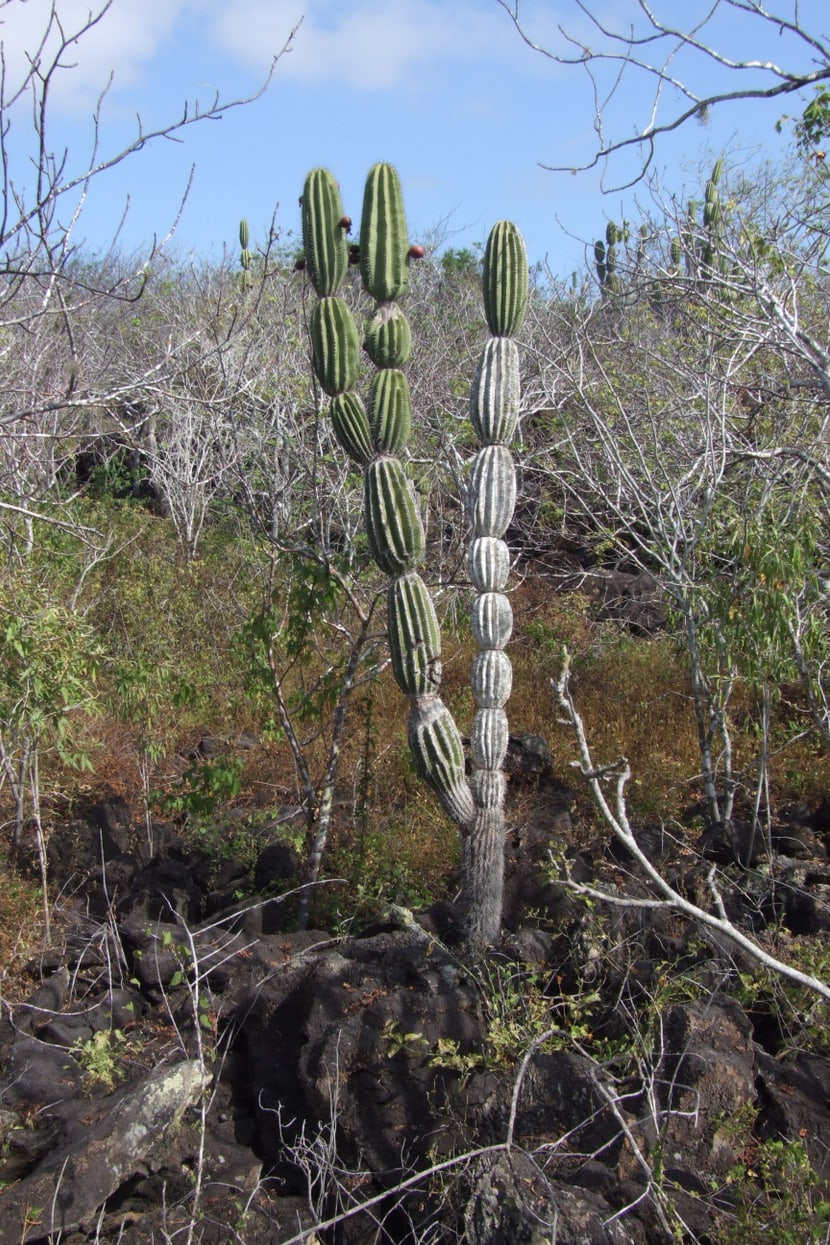
Galapagos Candelabra Cactusã Paquita Hoeck
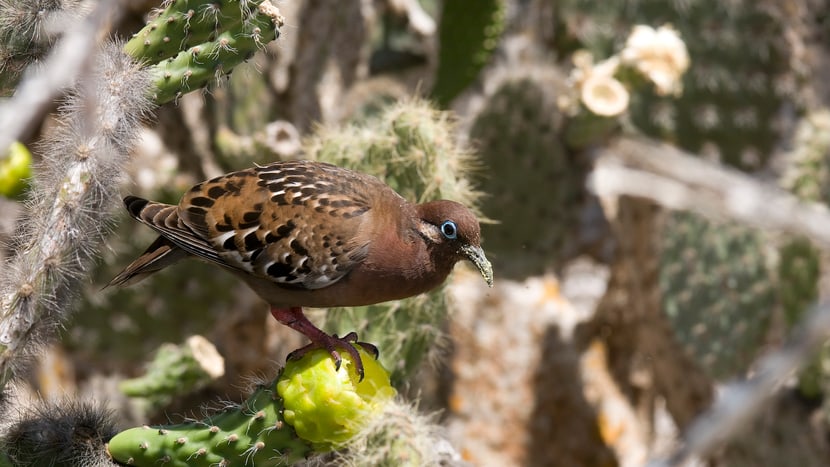
Galápagos pigeon in a catus ã Paquita Hoeck
This is why the archipelago's cacti are so important to the preservation of its ecosystems. They support many other endemic species because they can store water for a long time and, as so-called pioneer plants, enable the colonization of new habitats.
